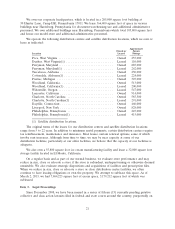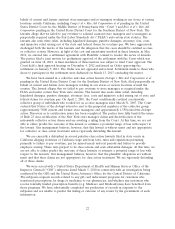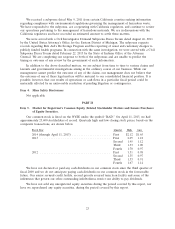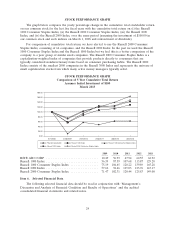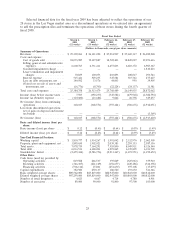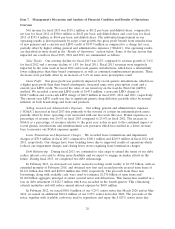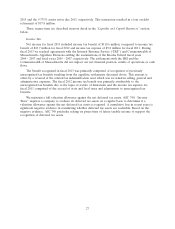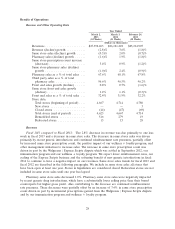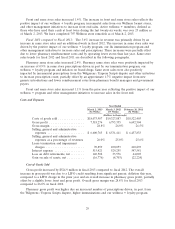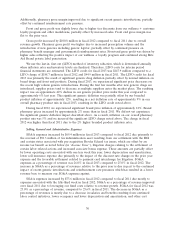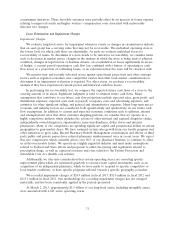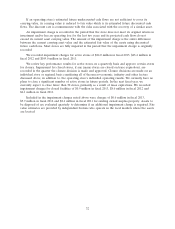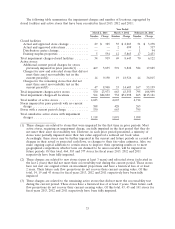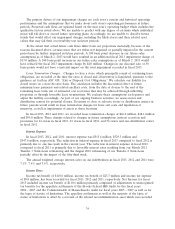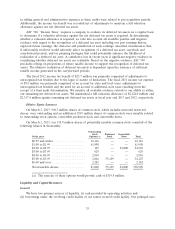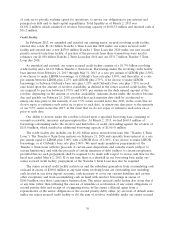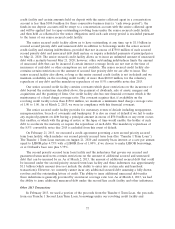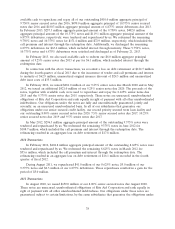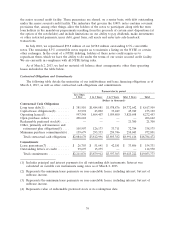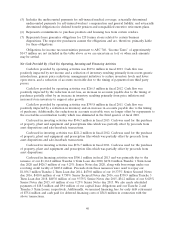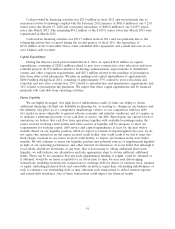Rite Aid 2013 Annual Report Download - page 32
Download and view the complete annual report
Please find page 32 of the 2013 Rite Aid annual report below. You can navigate through the pages in the report by either clicking on the pages listed below, or by using the keyword search tool below to find specific information within the annual report.containment initiatives. These favorable variances were partially offset by an increase in bonus expense
relating to improved results and higher workers’ compensation costs associated with unfavorable
discount rate changes.
Lease Termination and Impairment Charges
Impairment Charges:
We evaluate long-lived assets for impairment whenever events or changes in circumstances indicate
that an asset group has a carrying value that may not be recoverable. The individual operating store is
the lowest level for which cash flows are identifiable. As such, we evaluate individual stores for
recoverability of assets. To determine if a store needs to be tested for recoverability, we consider items
such as decreases in market prices, changes in the manner in which the store is being used or physical
condition, changes in legal factors or business climate, an accumulation of losses significantly in excess
of budget, a current period operating or cash flow loss combined with a history of operating or cash
flow losses or a projection of continuing losses, or an expectation that the store will be closed or sold.
We monitor new and recently relocated stores against operational projections and other strategic
factors such as regional economics, new competitive entries and other local market considerations to
determine if an impairment evaluation is required. For other stores, we perform a recoverability
analysis if they have experienced current-period and historical cash flow losses.
In performing the recoverability test, we compare the expected future cash flows of a store to the
carrying amount of its assets. Significant judgment is used to estimate future cash flows. Major
assumptions that contribute to our future cash flow projections include expected sales, gross profit, and
distribution expenses; expected costs such as payroll, occupancy costs and advertising expenses; and
estimates for other significant selling, and general and administrative expenses. Many long-term macro-
economic and industry factors are considered, both quantitatively and qualitatively, in our future cash
flow assumptions. In addition to current and expected economic conditions such as inflation, interest
and unemployment rates that affect customer shopping patterns, we consider that we operate in a
highly competitive industry which includes the actions of other national and regional drugstore chains,
independently owned drugstores, supermarkets, mass merchandisers, dollar stores and internet
pharmacies. Many of our competitors are spending significant capital and promotional dollars in certain
geographies to gain market share. We have assumed certain sales growth from our loyalty program and
other initiatives to grow sales. Recent Pharmacy Benefit Management consolidation and efforts of third
party public and private payors have reduced pharmacy reimbursement rates in recent years. We expect
this rate compression, which currently affects over 96% of our pharmacy business, to continue to affect
us in the foreseeable future. We operate in a highly regulated industry and must make assumptions
related to Federal and State efforts and proposals to affect the pricing and regulations related to
prescription drugs, as well as, expected revenues and costs related to the Patient Protection and
Affordable Care Act (health care reform).
Additionally, we take into consideration that certain operating stores are executing specific
improvement plans which are monitored quarterly to recoup recent capital investments, such as an
acquisition of an independent pharmacy, which we have made to respond to specific competitive or
local market conditions, or have specific programs tailored towards a specific geography or market.
We recorded impairment charges of $24.9 million in fiscal 2013, $52.0 million in fiscal 2012 and
$115.1 million in fiscal 2011. Our methodology for recording impairment charges has not changed
materially, and has been consistently applied in the periods presented.
At March 2, 2013, approximately $1.9 billion of our long-lived assets, including intangible assets,
were associated with 4,623 active operating stores.
31


